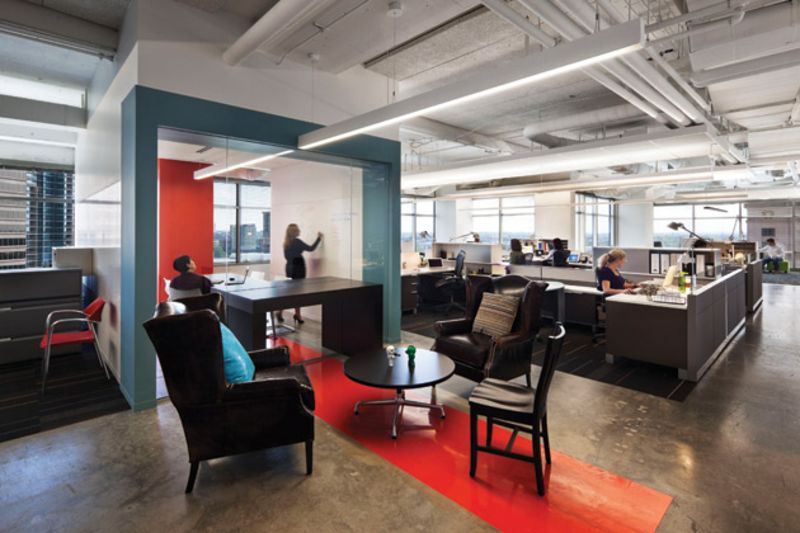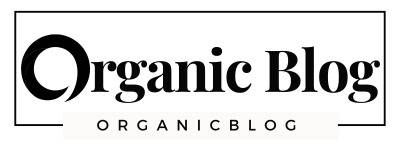
In today’s fast-paced business environment, the physical workspace plays a pivotal role in shaping employee productivity, creativity, and overall company culture. Gone are the days of sterile cubicles and fluorescent-lit monotony; modern offices are evolving into dynamic hubs that foster collaboration, innovation, and well-being. This transformation is largely driven by professional office design services and strategic office refurbs, which breathe new life into outdated spaces. Whether you’re a startup scaling up or an established corporation refreshing your brand, investing in these services can yield significant returns in employee satisfaction and operational efficiency.
This comprehensive article delves deep into the world of office design and refurbishment. We’ll explore the fundamentals, benefits, key trends, planning processes, real-world case studies, and future outlook. By the end, you’ll understand why these elements are indispensable for any forward-thinking organization.
Understanding Office Design Services
Office design services encompass a broad spectrum of expertise aimed at creating functional, aesthetically pleasing, and ergonomic work environments. These services are typically provided by specialized firms that combine architecture, interior design, and project management to tailor spaces to a company’s unique needs.
Core Components of Office Design Services
- Space Planning and Layout Optimization: At the heart of office design services is efficient space utilization. Designers analyze workflow patterns, department interactions, and growth projections to create layouts that minimize wasted square footage. For instance, open-plan areas encourage teamwork, while designated quiet zones support focused tasks.
- Ergonomics and Health-Focused Design: With remote work blurring boundaries, in-office ergonomics has never been more critical. Services include selecting adjustable desks, supportive seating, and proper lighting to reduce strain and prevent issues like repetitive stress injuries. Biophilic elements—incorporating plants, natural light, and water features—are increasingly integrated to boost mental health.
- Branding and Aesthetic Integration: Your office should reflect your brand identity. Designers incorporate company colors, logos, and thematic elements to create a cohesive narrative. This not only impresses clients but also instills pride in employees.
- Technology Integration: Modern offices demand seamless tech infrastructure. Office design services ensure robust Wi-Fi, smart boards, video conferencing setups, and IoT devices are embedded without cluttering the space.
- Sustainability Practices: Eco-conscious design is a growing priority. Services often include energy-efficient lighting, recycled materials, and LEED certification pursuits to minimize environmental impact.
Professional firms handle everything from initial consultations and 3D renderings to final installations, ensuring a hassle-free process.
The Power of Office Refurbs: Revitalizing Existing Spaces
While new builds offer a blank canvas, many businesses opt for office refurbs to upgrade existing premises. Refurbishment involves renovating and modernizing without the need for relocation, making it cost-effective and disruptive-minimizing.
Why Choose Office Refurbs?
- Cost Savings: Refurbs can cost 30-50% less than new constructions, preserving capital for other investments.
- Minimal Downtime: Phased approaches allow operations to continue with limited interruptions.
- Adaptability to Change: Post-pandemic, refurbs address hybrid work models by adding flexible hot-desking and collaboration pods.
- Value Enhancement: Upgraded spaces increase property value and appeal to top talent.
Key Elements in Office Refurbs
- Structural Updates: Reinforcing floors for heavy equipment, improving HVAC systems for better air quality, and enhancing acoustics with soundproofing.
- Interior Overhauls: Replacing outdated fixtures with modern finishes—think sleek partition walls, modular furniture, and vibrant accent walls.
- Compliance and Safety: Ensuring adherence to building codes, fire safety, and accessibility standards like ADA compliance.
- Energy Efficiency Upgrades: Installing LED lighting, smart thermostats, and insulation to cut utility bills by up to 40%.
Office refurbs are ideal for legacy buildings in urban centers, where prime locations are scarce.
Benefits of Investing in Office Design and Refurbs
The advantages extend far beyond aesthetics. Here’s a detailed breakdown:
Enhanced Productivity and Employee Retention
Studies from the World Green Building Council show that well-designed offices can boost productivity by 15-20%. Natural light alone reduces absenteeism by 10%. Employees in refurbished spaces report higher job satisfaction, lowering turnover rates—which can cost companies 50-200% of an employee’s salary to replace.
Improved Collaboration and Innovation
Open layouts with breakout areas facilitate spontaneous interactions, sparking creativity. Tech giants like Google attribute part of their innovation to thoughtfully designed campuses.
Cost-Effective Long-Term Savings
Initial investments in quality office design services pay off through reduced maintenance, lower energy costs, and adaptable spaces that evolve with the business.
Attracting Talent and Clients
In a competitive job market, a modern office is a recruitment tool. Clients visiting a refurbished space perceive professionalism and stability.
Health and Well-Being
Incorporating wellness rooms, gyms, and healthy cafeterias combats burnout, especially in high-stress industries.
Current Trends Shaping Office Design and Refurbs
The office landscape is in flux, influenced by technology, sustainability, and societal shifts.
- Hybrid Work Optimization: Flexible zones with bookable desks via apps, and “neighborhood” layouts for teams.
- Biophilic and Wellness-Centric Design: Living walls, circadian lighting, and mindfulness spaces.
- Sustainable Materials: Reclaimed wood, low-VOC paints, and circular economy principles in office refurbs.
- Tech-Enabled Smart Offices: AI-driven climate control, occupancy sensors, and VR collaboration tools.
- Inclusive Design: Gender-neutral restrooms, sensory-friendly areas for neurodiverse employees, and multi-faith prayer rooms.
- Resimercial Aesthetics: Blending residential comfort (sofas, rugs) with commercial functionality.
These trends ensure offices remain relevant in a post-COVID world.
Step-by-Step Guide to Planning Office Design or Refurbs
Embarking on a project requires meticulous planning. Here’s an in-depth roadmap:
Phase 1: Needs Assessment (2-4 Weeks)
- Conduct employee surveys and stakeholder interviews.
- Analyze current space usage with heat maps.
- Define budget, timeline, and KPIs (e.g., 10% productivity increase).
Phase 2: Partner Selection (1-2 Weeks)
- Research firms specializing in office design services.
- Review portfolios, client testimonials, and certifications.
- Request proposals from 3-5 providers.
Phase 3: Conceptual Design (4-6 Weeks)
- Develop mood boards, floor plans, and 3D models.
- Iterate based on feedback.
- Incorporate sustainability audits.
Phase 4: Detailed Planning and Approvals (3-5 Weeks)
- Finalize materials, vendors, and contractors.
- Secure permits for office refurbs.
- Create a disruption mitigation plan (e.g., off-hours work).
Phase 5: Execution (8-16 Weeks)
- Demolition and construction in phases.
- Regular site inspections and progress reports.
- Furniture procurement and installation.
Phase 6: Post-Occupancy Evaluation (Ongoing)
- Gather feedback via apps or surveys.
- Fine-tune elements like lighting or acoustics.
- Measure ROI through metrics like energy savings.
Total timeline: 4-9 months, depending on scale.
Real-World Case Studies
Case Study 1: Tech Startup Revival
A Silicon Valley fintech firm engaged office design services for their 10,000 sq ft space. The result: Agile zones with writable walls increased collaboration by 25%, per internal metrics. Employee Net Promoter Score rose from 65 to 85.
Case Study 2: Corporate Refurbishment Success
A London-based law firm underwent office refurbs in a historic building. Heritage elements were preserved while adding modern tech. Energy costs dropped 35%, and client retention improved due to impressive meeting rooms.
Case Study 3: Global Hybrid Transformation
A multinational in Singapore refurbished 50,000 sq ft across floors. Hot-desking reduced unused space by 40%, supporting 30% remote workforce. Biophilic additions lowered stress levels, as measured by wearable data.
These examples highlight tangible impacts.
Challenges and How to Overcome Them
- Budget Overruns: Mitigate with detailed contingencies (10-15% buffer).
- Employee Resistance: Involve staff early through workshops.
- Supply Chain Delays: Source locally where possible.
- Regulatory Hurdles: Engage experts familiar with local codes.
The Future of Office Design and Refurbs
Looking ahead, AI will personalize spaces in real-time—adjusting lights based on mood. Metaverse integrations could blend physical and virtual offices. Sustainability will mandate net-zero designs by 2030 in many regions.
As remote work stabilizes, offices will emphasize “experience” over necessity—think event spaces and community hubs.
Conclusion: Elevate Your Workspace Today
Investing in professional office design services and timely office refurbs is no longer a luxury but a strategic imperative. These initiatives create environments where people thrive, businesses grow, and innovation flourishes. Whether starting fresh or revitalizing the old, the right approach can transform your office into a competitive advantage.
Consult experts, align with your vision, and watch your workspace become a catalyst for success. In an era where talent is king, a thoughtfully designed office might just be your throne.
